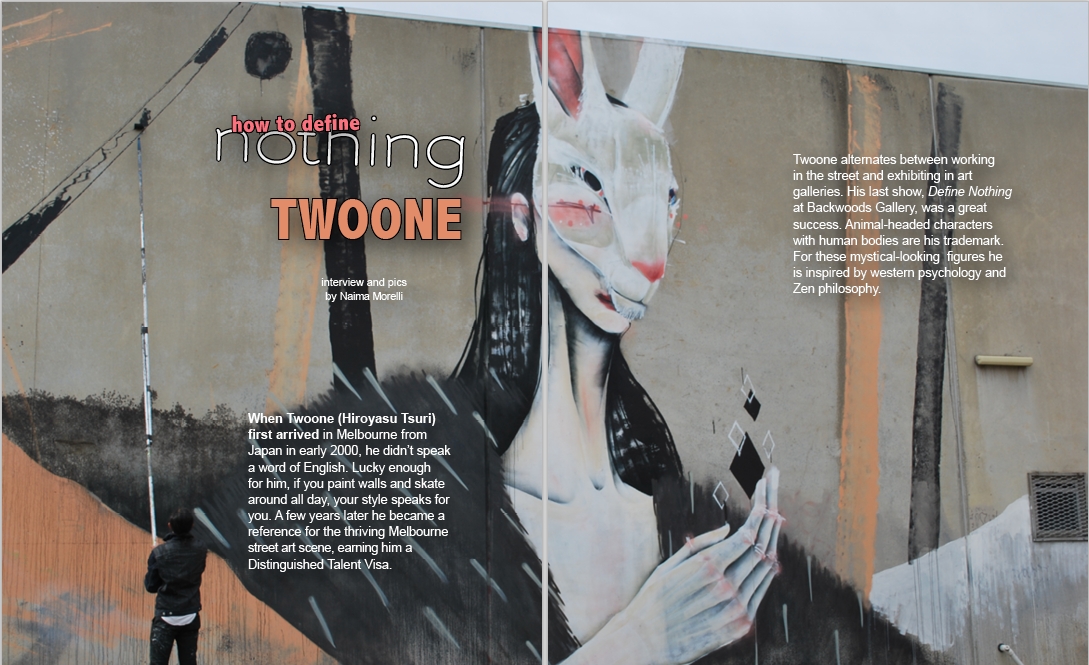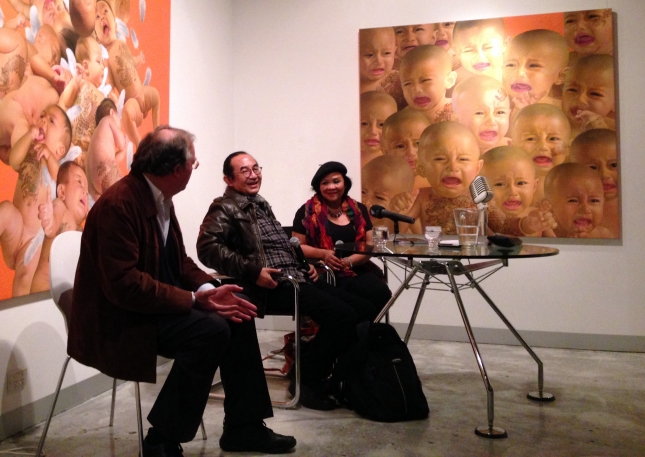
“Nothing’s happened since Yesterday – Due artisti da Melbourne” is going to open tomorrow at Galleria 291est in Rome and we are super-excited. These days have been pretty busy for exhibiting artists Georgina Lee and Kenny Pittock; I dragged them to gallery and vernissage all over Rome, yesterday we had a talk at the Art Academy (pics soon on this blog) and most importantly they have installed their work in the gallery. On the second day both artists showed up at Galleria 291est sporting “I love Rome” t-shirts. Kenny was so in love with his t-shirt to the point that he refused to change it even for the ultra-posh opening in Villa Medici, the French Academy. That’s the best part of being an artist after all, you can wear whatever the hell you want and no one can tell you anything!
The whole setting-up process has been filmed by Mauro Piccinini of Hour Interview, a great video series that catches snippets of artists’ working day. I’m super curious to see the result! If you are in Rome in these days, come visit us for the opening tomorrow!
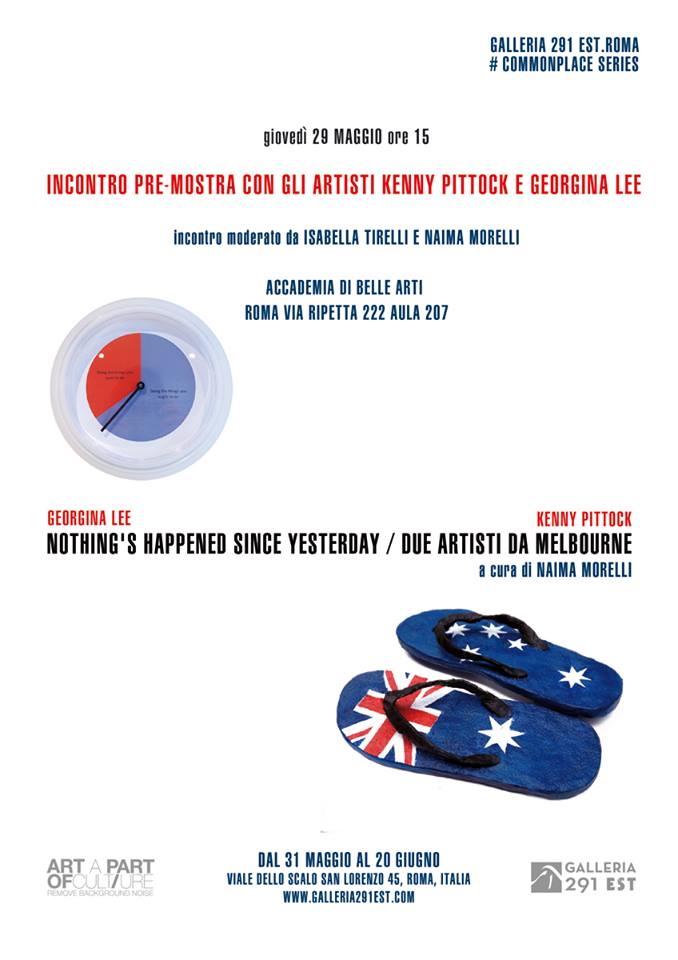
Giovedì 29 maggio ore 15
incontro pre-mostra con gli artisti Kenny Pittock e Georgina Lee
incontro moderato da Isabella Tirelli e Naima Morelli
Thursday May 29 , 3 pm
pre-exhibition talk with artists Kenny Pittock e Georgina Lee
talk moderated by Isabella Tirelli and Naima Morelli
Accademia di Belle Arti
Roma via ripetta 222 Aula 207
Giovedì pomeriggio all’Accademia di Belle Arti di Roma si terrà il talk degli artisti australiani Kenny Pittock e Georgina Lee. La discussione, che coinvolgerà anche gli studenti, verterà sulle peculiarità del sistema dell’arte australiano rispetto a quello italiano e sul percorso artistico degli artisti emergenti in entrambi i paesi.
Nel corso dell’incontro gli artisti discuteranno la propria pratica artistica in vista dell’imminente mostra alla Galleria 291est, curata da me nell’ambito della rassegna Common Place. Inoltre, codiuvata dalla Prof. Isabella Tirelli, fornirò una breve introduzione del contesto australiano basandomi sulla mia ricerca condotta a Melbourne nel corso del 2013.
A talk by artists Kenny Pittock and Georgina Lee will be held at Rome’s Art Academy on Thursday afternoon. The discussion with the students will focus on the peculiarities of the Australian art system compared to the Italian one and on the emerging artists’ path in both countries. The artists will also talk about their work for their upcoming exhibition at Galleria 291est, Rome, curated by me for the Common Place series. Together with lecturer Prof. Isabella Tirelli, I will also give an introduction to the Australian context based on my research on the Melbourne art scene.
Read More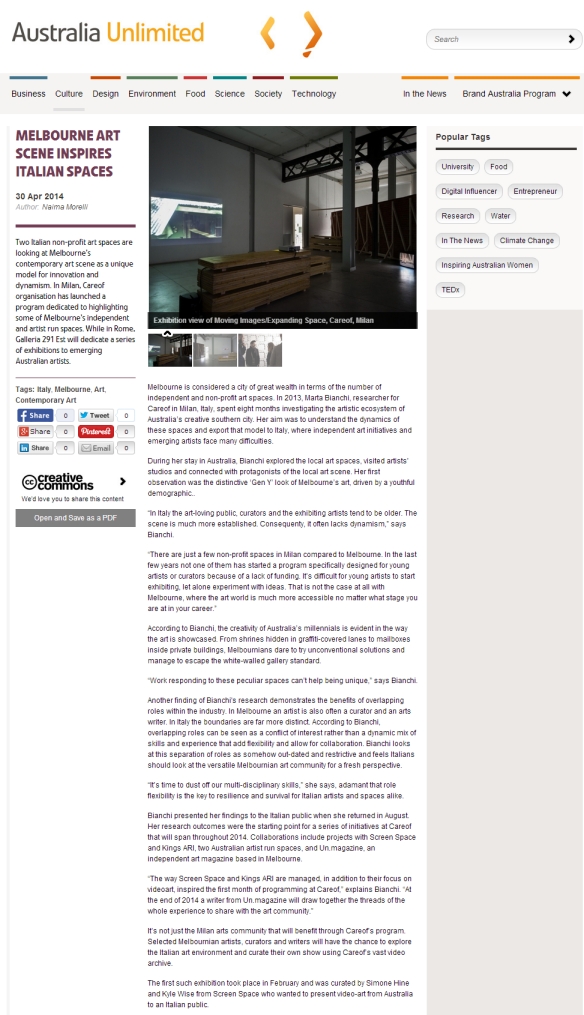
The web-magazine Australia Unlimited has just published my article about Italian non-profit art spaces looking at Melbourne’s contemporary art scene as a unique model for innovation and dynamism. The article is part of my reportage about emerging artists in Melbourne.
Read More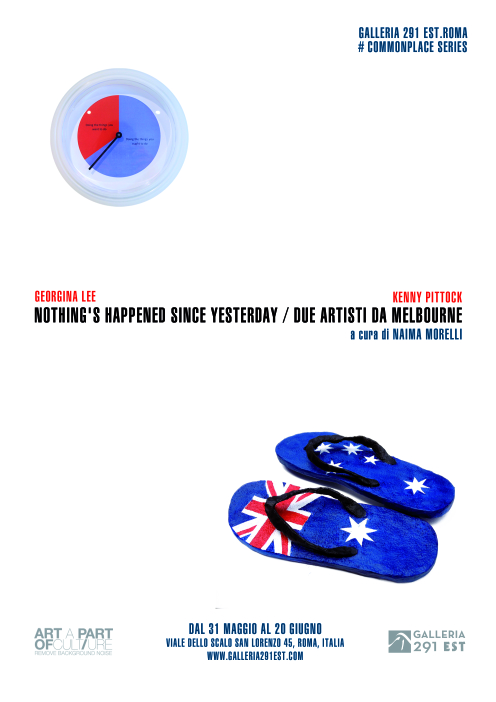
–
Il 31 maggio inagurerà alla Galleria 291 est a Roma la mostra dei due artisti australiani Kenny Pittock e Georgina Lee, con mia curatela. La mostra è parte della mia ricerca sugli artisti emergenti a Melbourne. Beccatevi il comunicato e una galleria di immagini:
Read More
It’s Easter holidays and instead of camping and picnicking in random green spots in Sorrento, as it’s tradition over here, I’m working on a new book.
This will be a narrative essay about the challenges of being a young artist. The setting is Melbourne, Australia, but the book will be a snapshot of a moment of an artist’s career all over the world.
This book has a lighter tone compared to my Indonesian one (which is now going through the editing process in case you were wondering). With the Indonesian book I had to tackle pretty serious themes, since the country’s history has been pretty turbulent; while younger artists are lured by an often misleading market, established artists have to come to terms with the country’s political and social issues. Years of colonialism, dictatorship and struggles have very deeply influenced the contemporary artists in Indonesia.
Australia didn’t have that on a superficial level. The tragedies concerning Indigenous Australians or the aggressive Australian policies towards migrants – to name just two – don’t really register as their own to young, mostly white, Australians.
The focus of my book will still be contemporary art in relation with its context, but this time I want to be more personal. How to get a living when you have always thought that everything you would have to do in life was art? I heard this question by many of my artist friends and I also asked it to myself more than once.
The Melbournian system and the Australian way have some answers, but they pose also some new challenges. In this book I will give my take on the problem through my experience and the 40 voices of people I’ve interviewed in Australia. I’m interested in showing the good sides of the ecosystem in Melbourne and explaining how that could be beneficial for an artist who is interested in having a career.
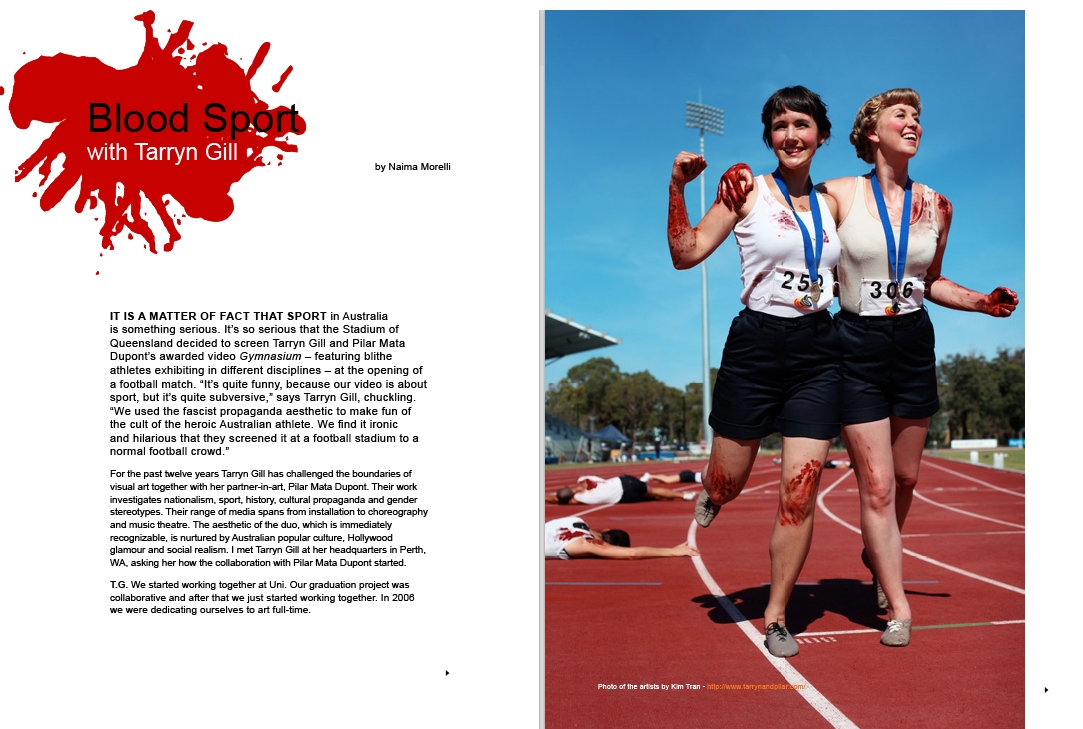
The Australian magazine Trouble has just published the interview I had in Perth with artist Tarryn Gill. The interview is part of my reportage about the Perth Art Scene.
Here the link to the interview
Here the link to the online version of the magazine
Read More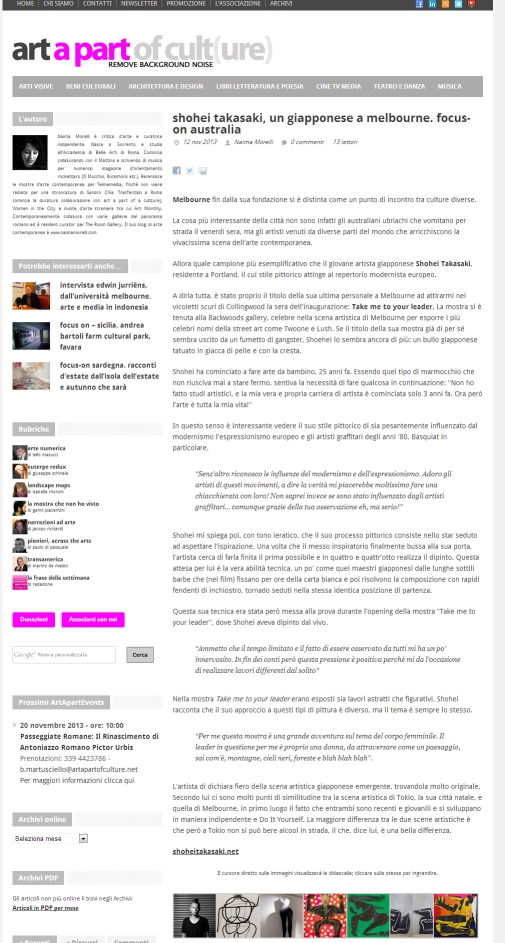
The Italian web magazine Art a Part of Cult(ure) has just published my interview with the Japanese artist Shohei Takasaki. The interview is part of my reportage about emerging artists in Melbourne.
Here the link to the interview
Read More
My article “An artist in a waitress’s body” is in the November issue of Art Monthly Australia. The article features interviews with artsHub director Deborah Stone and artists Georgina Lee and Boe-Lin Bastian. The interview is part of my reportage about emerging artists in Melbourne.
Here the link to the Art Monthly Au website
Read More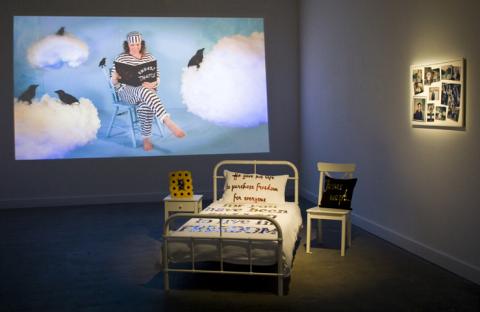
Bindi Cole is one of the first artists I interviewed in Melbourne.
I come to know about her work during the presentation talk of “Melbourne Now” exhibition at the NGV.
Her work span through different mediums, from photography to installation, and the themes are often related to her personal history and aboriginal issues.
She constantly challenges stereotypes, revealing overlooked complexities behind communities and identities. In the series “Not Really Aboriginal” she photographed her family and herself with black painting on their face. The title refers to the accusation that some people addressed to her, that of not being “really” Aboriginal, because of her anglosaxon aspect and her light skin.
One of her most challenging work is “Sistagirls”, a photographic series about the transgender community of the Tiwi Islands.
Recently Bindi Cole decided to reflect on her personal history, mainly through video and installations. Even if she went through tough times, her vision underlies a constant optimism and reveals the beauty of the human experience.
I find her recent installation with emu feathers “I Forgive You) (currently exhibited at Queensland Art Gallery) just moving.

I recently interviewed the artist Twoone (Hiroyasu Tsuri) in his studio in Collingwood.
The studio was quite empty because he had brought all the paintings at the Backwoods gallery, for his upcoming solo show “Define Nothing”.
Twoone’s Japanese background is evident in his paintings’ balanced composition. His mystical-looking characters with animal heads, realized in his unique style, are his trademark in the Melbournian thriving street art culture.
The exhibition has been a success. I took some pictures of the Twoone’s artworks in the gallery, and then I followed him in a street nearby where he was painting a wall.
